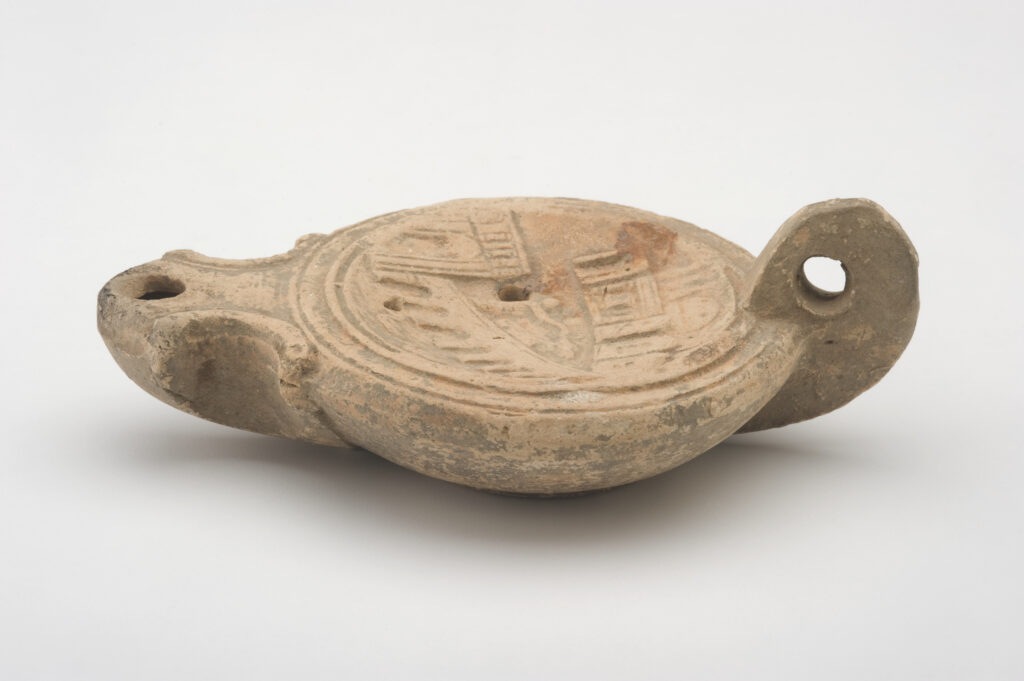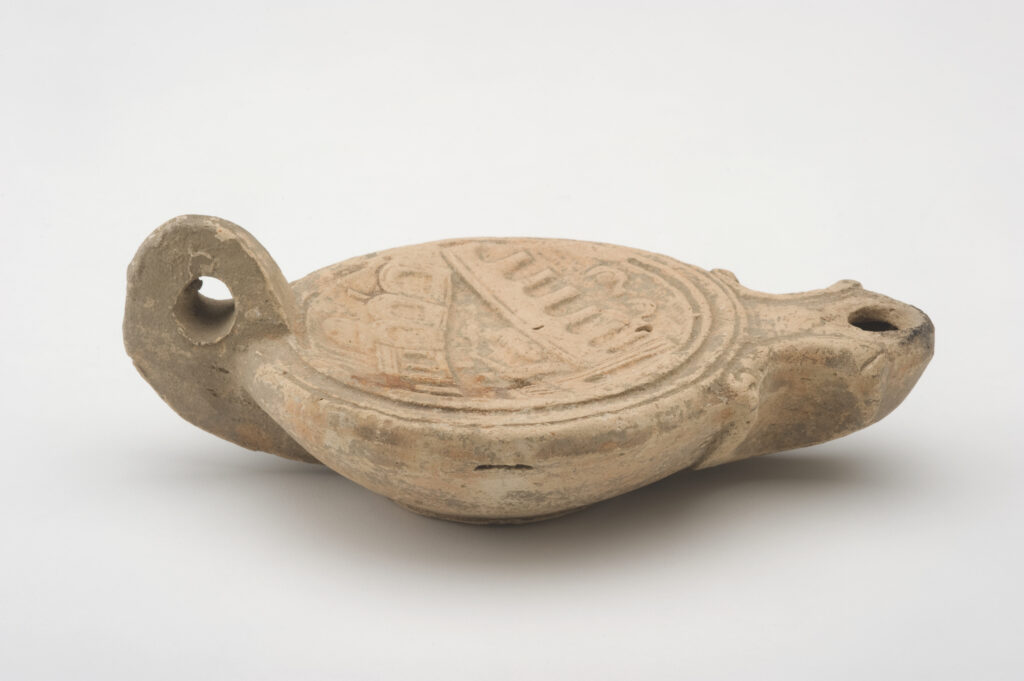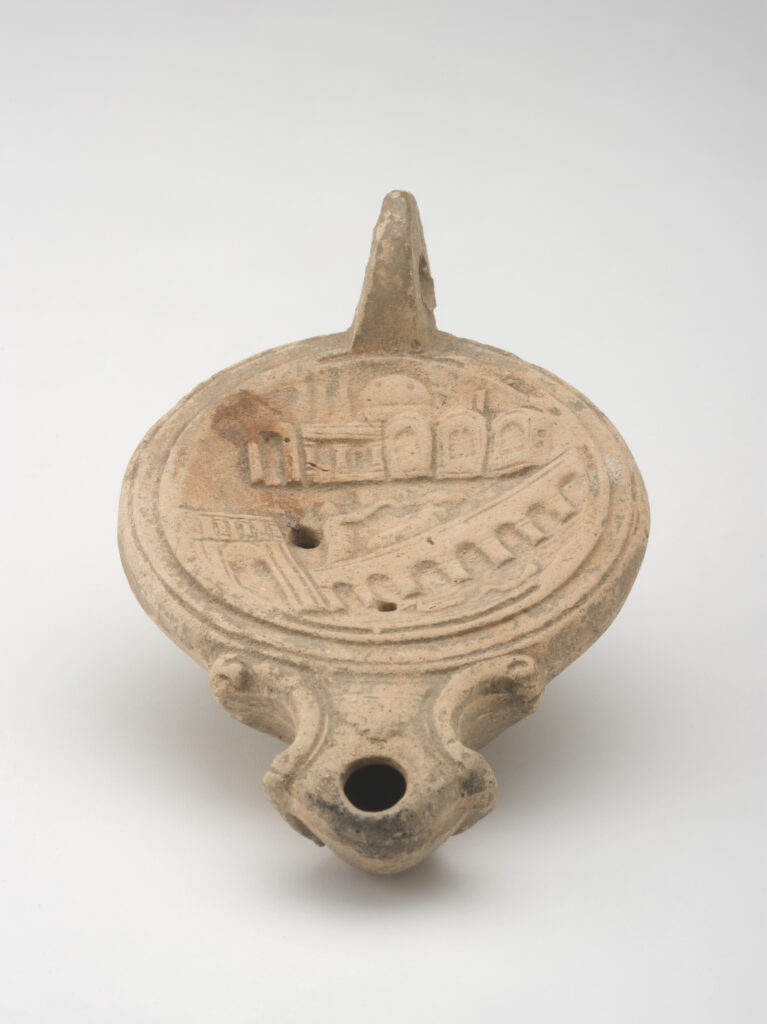Lamp with Harbor Scene (work of art)
Artwork Info
About
Key Ideas
- This small oil lamp has a rounded body and a protruding handle and spout. The top surface is slightly sunken, with a decorative scene pressed into it.
- The lamp’s surface decoration depicts a harbor scene. The design may represent a famous Mediterranean port from antiquity (like Ostia or Alexandria), or it may simply show a fictional scene with buildings and human figures.
- This is a mold-made oil lamp. Many Roman mold-made lamps were decorated with similar scenes.
- The holes in the lamp were openings that were used to fill it with oil.
- Clay, or ceramic, oil lamps were the most popular form of lighting in the ancient world. They were inexpensive to make, and their small size made them easy to carry.
Learn More
Clay lamps were first developed in the Bronze Age. The earliest examples were open vessels that were similar to bowls. Over time the lamps became more enclosed, to prevent oil from spilling out of them. Clay lamps were produced in several different ways. Some were molded by hand, others were made on a potter’s wheel, and some were made using molds.
Lamp makers began using molds to create lamps during the Hellenistic period (323 through 31 BCE). Mold-made lamps like Lamp with Harbor Scene were made in a two-piece mold. Two-piece molds may have been made from plaster, fired clay, or limestone. The two pieces formed the upper and lower parts of the lamp. The mold for the top of the lamp would have included a relief design that was pressed into the clay. Using molds made it faster for the makers to create their lamps, and it allowed them to easily add more decoration to the surface of the clay.
These types of lamps were popular in the Mediterranean region, where large amounts of olive oil were produced. Olive oil is an effective fuel for lighting. Other plant-based oils and animal fats may have also been used as lamp fuel. In addition to oil, the lamps required a wick in order to be lit. Wicks were made from materials like plant fibers, papyrus, or linen.
Oil lamps were used in many spaces outside the home. They were burned at Roman festivals and used to light the large interiors of Roman temples and religious sanctuaries. In ancient Rome votive offerings may have included lamps that were dedicated to specific deities. Dark underground spaces like catacombs were often illuminated by oil lamps. Pottery and oil lamps that served as grave goods (items for a deceased person to use in the afterlife) have been found inside Roman tombs.
Additional Resources
Resources for Teachers:
- Watch a short video to learn more about Roman oil lamps.
- Read about a Roman oil lamp found at the Jamestown Archaeological site in Virginia. The webpage includes a video explaining how the lamp may have arrived there.
- Watch a video about the creation of Roman oil lamp replicas.
Resources for Students:
- View a similar example of a terracotta oil lamp at the Metropolitan Museum of Art.
- Read an article about Roman oil lamps.
- Watch a short video about the production of mold-made oil lamps.
- Watch a video to see how ancient oil lamps were used.



